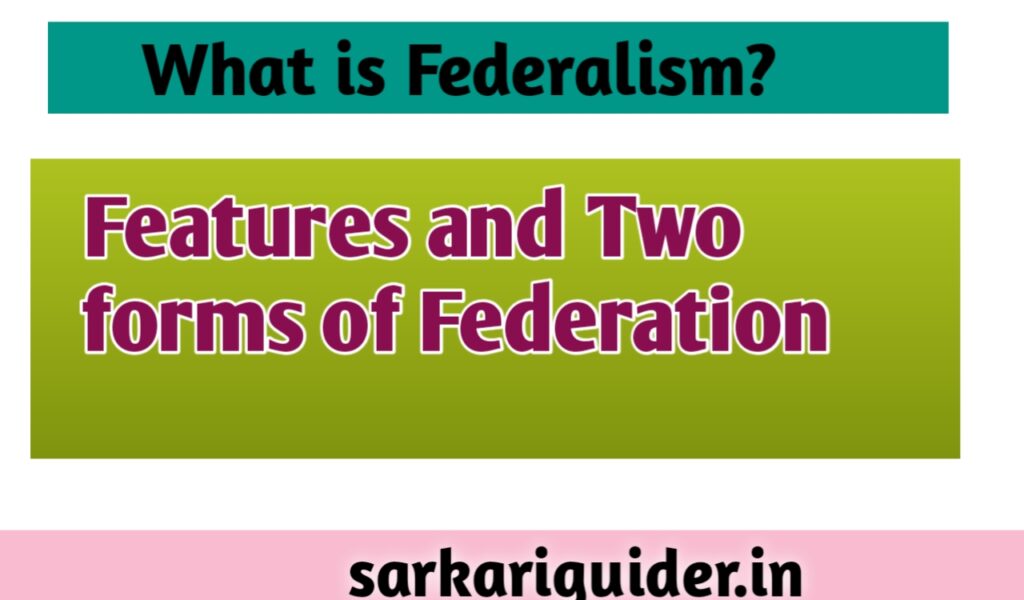What is Federalism? Features and Two forms of Federation

What is Federalism? Features and Two forms of Federation
What is Federalism?
Federalism is a system of government in which the power is divided between a central authority and various constituent units of the country. Usually, a federation has two levels of government. One is the government for the entire country that is usually responsible for a few subjects of common national interest. The others are governments at the level of provinces or states that look after much of the day-to-day administering of their state. Both these levels of governments enjoy their power independent of the other.
In this sense, federations are contrasted with unitary governments. Under the unitary system, either there is only one level of government or the sub-units are subordinate to the central government. The central government can pass on orders to the provincial or the local government. But in a federal system, the central government cannot order the state government to do something. State government has powers of its own for which it is not answerable to the central government. Both these governments are separately answerable to the people.
Features of Federalism
The key features of federal government are as follows:
1. Two or more levels of government – In a federal government, There are two or more levels of government at the state, provincial and local levels.
2. Three tier system – In a federal government, different tiers of the government governs the same citizens. in India, we have a three- tier system of government for examples:-
- union state
- state government
- local self government
3. Jurisdictions – In federalism, jurisdictions plays an important role in overseeing the implementations of constitutional provisions and procedure. in case of any dispute about the division of power, The High court and the Supreme court take a decision, So the existence and authority of each tier of government is constitutionally guaranteed.
4. Constitution Status – The fundamental provisions of the constitution cannot be unilaterally changed by one level of government. Such changes require the consent of both the levels of government.
5. Distribution of power – Courts have the power to interpret the constitution and the powers of different levels of government. The highest court acts as an umpire if disputes arise between different levels of government in the exercise of their respective powers. the three lists are-:
- union list
- state list
- concurrent list
6. supreme sources of income – a clear mention regarding the financial powers of the center and the state has been made in the Indian constitution. income tax, excise duty etc. are levied and collected by the central government where as land revenue, stamp duty, etc. comes under the state government.
* The federal system has dual objectives: to safeguard and promote unity of the country, while at the same time accommodate regional diversity.
There are two forms of Federation
The exact balance of power between the central and the state government varies from one federation to another. This balance depends mainly on the context in which the federation was formed. There are two kinds of federation and these are as follows:
- coming together federations – In this form of Federation Independent states comes together to form a bigger unit. the objectives of nations in forming this federations is that by pooling sovereignty and retaining identity they can increase their security. USA, Switzerland and Australia have this form of federation.
- Holding together federations – In this form of federation a large country decides to divide its Power between the constituent states and the nationalism government. The central government tends to be more power full vis- a-vis the state. very often different constituent units of the federalism have unequal powers. India, Spain, and Belgium have this from of federations.
Important links
What is poetry? What are its main characteristics?
What is a lyric and what are its main forms?






